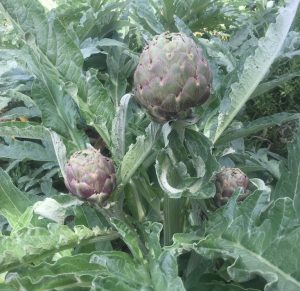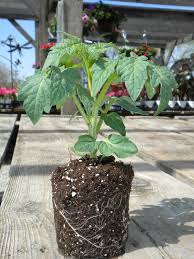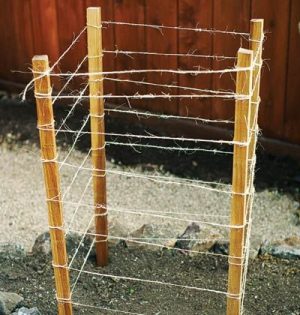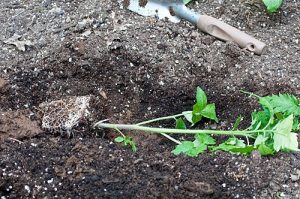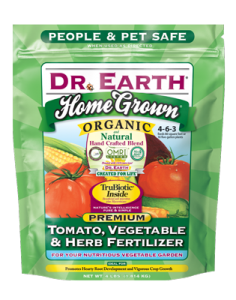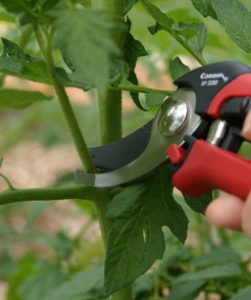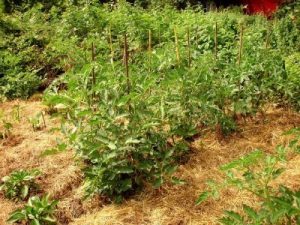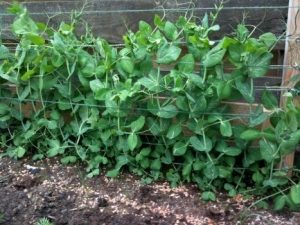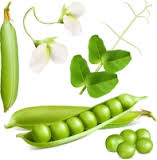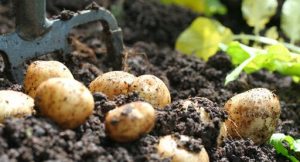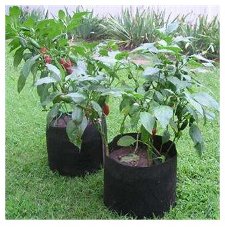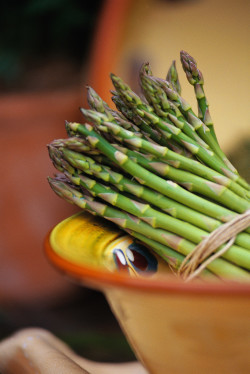Is your green thumb itching to get gardening again? These cold-loving crops will help you get the growing season started.

Most of us gardeners eagerly anticipate getting our hands in the dirt after a long winter indoors. To get a jump on the spring growing season requires a bit of planning, as well as knowledge of cold-tolerant vegetables and season extension techniques.
A key is to prepare the soil in the fall, so you can begin planting seeds in the spring as soon as the soil has completely thawed and warmed to the seed variety’s minimum temperature for germination. Keep in mind that heavy soils, such as clay, compact when worked while wet, preventing drainage. Allow them to dry out adequately before working them, especially if you didn’t prepare them in the fall.
Growing crops that germinate at cooler soil temperatures also helps you get an early start. (It also helps if they can withstand unexpected late frosts, though isn’t necessary if you use row covers or cold frames when the temperature is expected to dip below freezing.) To determine the soil temperature, stick a soil thermometer about 1 inch deep into the soil and allow it to stabilize. If it’s at the minimum recommended temperature, it’s time to kick off planting your spring garden. Here are seven crops to try.
1. Beets (Beta vulgaris subsp. vulgaris)
Some beet varieties, like heirloom Chioggia, mature in as little as 45 days, making them ideal for an early crop. When soil has warmed to 40 degrees F, plant seeds 3/4 inch deep, 1 inch apart, in rows spaced 12 to 18 inches apart. When seedlings are 4 inches tall, thin them to 4 to 6 inches apart by cutting off the tops. Don’t pull seedlings, as this might uproot nearby plants you want to keep.
Beets tolerate soil low in nutrients but need even water to prevent becoming bitter, so keep soil moist, but not soggy, throughout the growing season.
Begin harvesting beets when they reach 1 inch in diameter, or if you want larger crops, wait until they reach 3 inches in size. Larger beets can become pithy. Beets can withstand light frost, but should be harvested before the heat of summer, which slows sugar production, making them less palatable.
2. Spinach (Spinacia oleracea)
Spinach likes it cold, making it an ideal spring crop. Seeds germinate as low as 40 degrees F, and young seedlings can withstand temperatures down to 15 degrees F if frost occurs. Sow seeds 1/2 inch deep, 1 inch apart, in rows 12 to 18 inches apart. As an alternative, broadcast seeds and thin seedlings to 4 inches apart to prevent bolting. Keep the soil evenly moist throughout the growing season.
You can begin harvesting spinach when leaves are young, or wait for them to grow larger. Harvest outer leaves first. Spinach bolts when the air temperature warms, so plan to harvest plants before bolting occurs. Some spinach varieties, such as Razzle Dazzle, reach maturity in 30 days.
3. Spring Radish (Raphanus sativus)
Radish likes cool, wet weather, and you can be eating most varieties within three weeks of sowing seeds. Plant seeds four to five weeks before the last spring frost. Sow them 1/2 inch deep and 1 inch apart, in rows 12 inches apart. When seedlings emerge, thin plants to 2 inches apart; enjoy the thinned seedlings in salads or other dishes. Keep the soil evenly moist throughout the growing season to prevent cracking.
Harvest radishes when 1/2 to 1½ inches in diameter. Spring radishes come in many colors, shapes and sizes. Champion is round, bright red and matures within 20 days. The tapered April Cross is snowy white, grows up to 16 inches long, and is ready for harvest in 60 days. To avoid pithiness, harvest radishes before the heat of summer. For small gardens, save space by growing radishes between rows of larger, slower growing crops.
4. Pak Choy (Brassica rapa var. chinensis)
When the nighttime air temperature and the soil temperature have risen to 50 degrees F, consistently, sow pak choy seeds 1/4 to 1/2 inch deep and 1 inch apart in rows spaced 20 to 30 inches apart. When seedlings emerge, thin dwarf varieties to 6 inches apart and taller varieties to 12 inches apart. Thinned seedlings can be added to salads. Maintain plenty of water in the soil, without making it soggy, to prevent bolting and poor flavor.
If you harvest pak choy by cutting it about 2 inches above the soil level, a new plant regrows for continued harvest. The variety Autumn Poem can be sown in spring and harvested about 35 days later; many varieties can be harvested in less than 50 days.
5. Loose-leaf lettuce (Lactuca sativa var. crispa)
Lettuce thrives in cool weather and cool soil. When the soil has warmed to 40 degrees F, sow seeds 1/8 inch deep and 1 inch apart in rows 12 inches apart. When seedlings have two to three true leaves, thin plants to 6 inches part. Water regularly, keeping soil moist with 1 inch of water per week. Lettuce has shallow roots and cannot tolerate long dry spells.
You can begin harvesting young leaves when 2 inches long, about four weeks after sowing seeds. Harvest them by picking the outer leaves first so plants continue to produce. For the crispest lettuce, pick leaves during cool, early morning hours. Most varieties take 45 to 60 days to mature.
6. Peas (Pisum sativum)
Whether you grow snap, shell or snow varieties, peas are an excellent spring crop because seeds can be sown at 40 degrees F, and if seedling suffer frost damage, the plant responds by producing more fruit. Sow seeds 1 inch deep, 2 to 4 inches apart, in 18-inch rows. Vining types will need to be trellised. Spring rains should keep soil adequately moist, but if not, water enough to keep the top 1 inch of the soil wet without becoming waterlogged. Do not overwater, especially during flowering. This can reduce pollination and setting of pods.
Harvest peas in the early morning for crispness. The more you harvest the more the plant will produce. Pick snap and shelling varieties when peas round out pods, are light green and before pods yellow and become tough. Harvest snow varieties when pods have reached mature length and are still flat. Two fast-growing varieties to try are Sugar Sprint, a snap pea that is ready to harvest in 58 days, and Sugar Marvel, a shelling pea that grows 18-inch vines.
7. Spring Onions
Onion sets can be planted in the garden up to four weeks before the last spring frost and harvested in less than 60 days, making them ideal for spring. Plant onion sets that are 1/2 to 3/4 inch in diameter 1 inch deep, with the pointy, root side down. Space small varieties 2 inches apart and large varieties 4 inches apart. Keep onions sets evenly watered, and don’t allow them to dry out. A 2-inch layer of mulch can help retain moisture and suppress weeds.
Harvest bulbing onions when half of the tops have fallen over. Allow them to dry for about three to four weeks in a well-ventilated area then cut off the tops and trim the roots before storing them.
About the Author: Diana K. Williams is a certified master gardener and holds a Bachelor of Science in environmental studies and biology. She is presently serving on a committee that is designing community gardens for a local municipality. She writes from her home in Florida.

